Popular sport in Italy
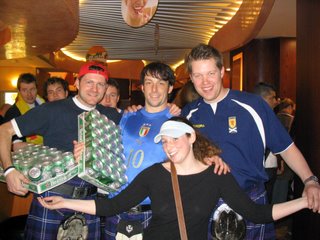 The life in northern Italy is not as big as the life in southern Italy. The north is a lot richer. The north also is more urbanized and has more industries than the south. The service industries are manufacturing and construction. The percentage of the people who worked in agriculture is higher in the south than in the north. In most parts of Italy people live in the city and the towns. Italians are really attached to their towns, homes, neighborhoods, and their families.
The life in northern Italy is not as big as the life in southern Italy. The north is a lot richer. The north also is more urbanized and has more industries than the south. The service industries are manufacturing and construction. The percentage of the people who worked in agriculture is higher in the south than in the north. In most parts of Italy people live in the city and the towns. Italians are really attached to their towns, homes, neighborhoods, and their families. City Life
City LifeA lot more than two-thirds of Italy’s people live around the Urban Areas. Italians live in concrete apartment buildings. A few of the wealthy people live in single-family homes. The oldest parts of an Italian cities consist a lot of low buildings that have apartments around the central court yard. The newer sections of the city often have big apartment buildings. Most of the home owners by rather apartments than rent their apartments. The poor neighborhoods are usually located on the outer part of the city.
Most unmarried children live with their parents. Parents a lot of the time help an adult son or daughter near an apartment near their own. A lot of young women work outside of their house. Grandparents often help watch the children of working moms. Most of the urban areas have public child-care centers. Cities grew because of the use of private cars which led to serious urban pollution. In big cities, the air pollution problems pose a health hazard and has damaged priceless architecture. Bologna and a lot of other cities have eased this problem by banning private cars from the city centers.
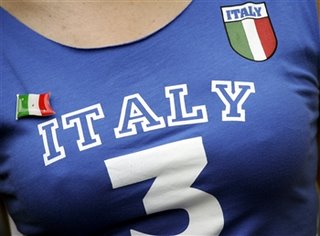 Rural Life
Rural LifeIn the past, a lot of rural communities in Italy consisted of a big agreement surrounded by a big area of agricultural land. Farmers most of the time live in a town and travel to fields each day. This pattern was especially common in southern Italy. In the north, a lot of farmers live on their land.
Most of the rural townspeople live in apartment buildings. Only wealthy people had their own buildings, which was usually in the middle of the community. Today, more and more single-family homes are being built in rural areas, sometimes outside of the old communities.
 Food and Drinks
Food and DrinksThe Italians take a lot of pride in their cooking. They usually eat their main meal at midday. They have big meals, such as a pasta meal, which
is followed by the main meal of either meat or fish. Sometimes they eat a meal of antipasto, which are appetizers. The antipasto has a lot of different cold meats and some vegetables, such as prosciutto (a type of ham,) salami, olives, and artichoke hearts.
Italian food differs a lot by the regions. In the north, flat, ribbon-shaped pastas get served with cream sauces are the most popular. In the south, macaroni is served with tomato-based sauces. Soups of all kinds usually take the spot of pasta as a first meal. Another popular meal is risotto, a rice plate with vegetables. The most popular meats are veal and pork. Cheeses are also important. They are either eaten alone or used in other meals. Pizza is a popular snack and is also eaten as a light meal. Fresh fruit is a popular desert. Traditionally, wine is served with every meal except breakfast.
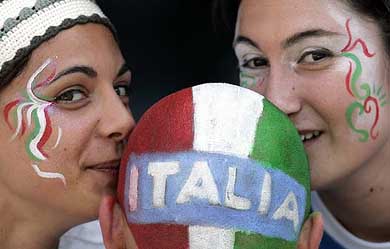 Recreation
RecreationItalians like a wide amount of sports. Soccer is the most popular sport in Italy. Every major city has a professional soccer team. But soccer is not just a big sport- on the weekends. Italy’s parks are filled with kids and adults playing the game of soccer. Basketball is also very popular; some cities have more than one professional basketball team. Other popular sports are fishing, cycling, roller-skating, and baseball.
Family recreational activities are taking a traditional Sunday passeggiata (family stroll), driving to the seashore or the mountains, and watching TV. Italians insist going to the movies, but growing popularity of watching TV has led to a decline in the movie attendance.

Religion
About 95 percent of Italy’s people are Roman Catholics. Most baptisms, weddings, and funerals are held in churches, but only about 30 percent of all Italians attend church regularly. A lot of others occasionally attend church. An agreement called the Latheran Pact governs the relationship between Italy and the Roman Catholic Church. For instance, the part is about priests and other members of religious orders from military service and gives tax exemptions to Catholic organizations.
The Roman Catholic Church has had a strong influence on laws in the past, but that influence has weakened. For example, until 1970, the church was able to block attempts to legalize divorce in Italy. In 1978, voters didn’t allow the church position and voted to allow abortions.
Vatican City, the spiritual and governmental center of the Roman Catholic Church, lies entirely within the city of Rome. There are a lot of small religious people in Italy. These groups are Protestane, Muslim, and Jewish.
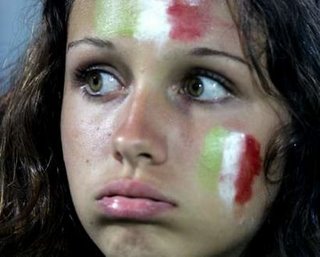 Education
EducationEvery kid between the ages of 6-14 go to school in Italy. More than 90 percent of them attend public schools. Through the Ministry of Education in Rome, the national government sets educational policies and selects the school system’s curricula and books. The required schooling is followed by a three-year junior high school. After they graduate from junior high school, students attend one of a lot of different kinds of senior high schools. A lot of the schools often have four or five year programs to study. The biggest group of students go to vocational schools, science schools, classical schools, teacher training schools, and language schools.
Any senior high school graduate may attend a university. Italy has 47 public universities. This country also has a few private universities, a lot of which are run by the Roman Catholic Church. Together, the universities enroll more than a million students each year. A lot of university programs last from four to six years.
University enrollment had been very heavy since the late 1960’s. The university of Rome, with an enrollment of about 170,000 is the biggest university in Italy. The university of Bologna, which dates from about 1100, is one of the world’s oldest universities.
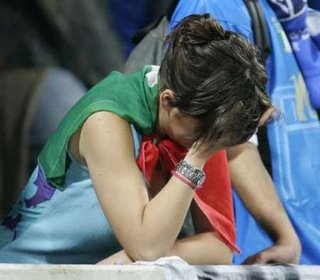 Museums and Libraries
Museums and LibrariesItaly is one of the world’s greatest centers of architecture, art, and books. A lot of its art museums rank among the most famous in the world. A lot of Italy’s museums are the famous palace of kings or the houses of royal families. These museums include the Pitti palace and the Uffizi Palace in Florence. National archaeological museums in Caglian, Naples, and Palermo contain artifacts from the earliest history of Italy. Displays in the national galleries in Naples, Palermor, and Urbino have paintings by Italian masters.
All large Italian cities have public libraries. The largest libraries in the country are the national central libraries in Florence and Rome. The one in Florence has about four and a half million volumes; the one in Rome has about three and a half million volumes. In Italy, people visit libraries only for serious study. Local libraries have little in the way of popular books for general readers, and children’s libraries are rare.




0 Comments:
Post a Comment
<< Home